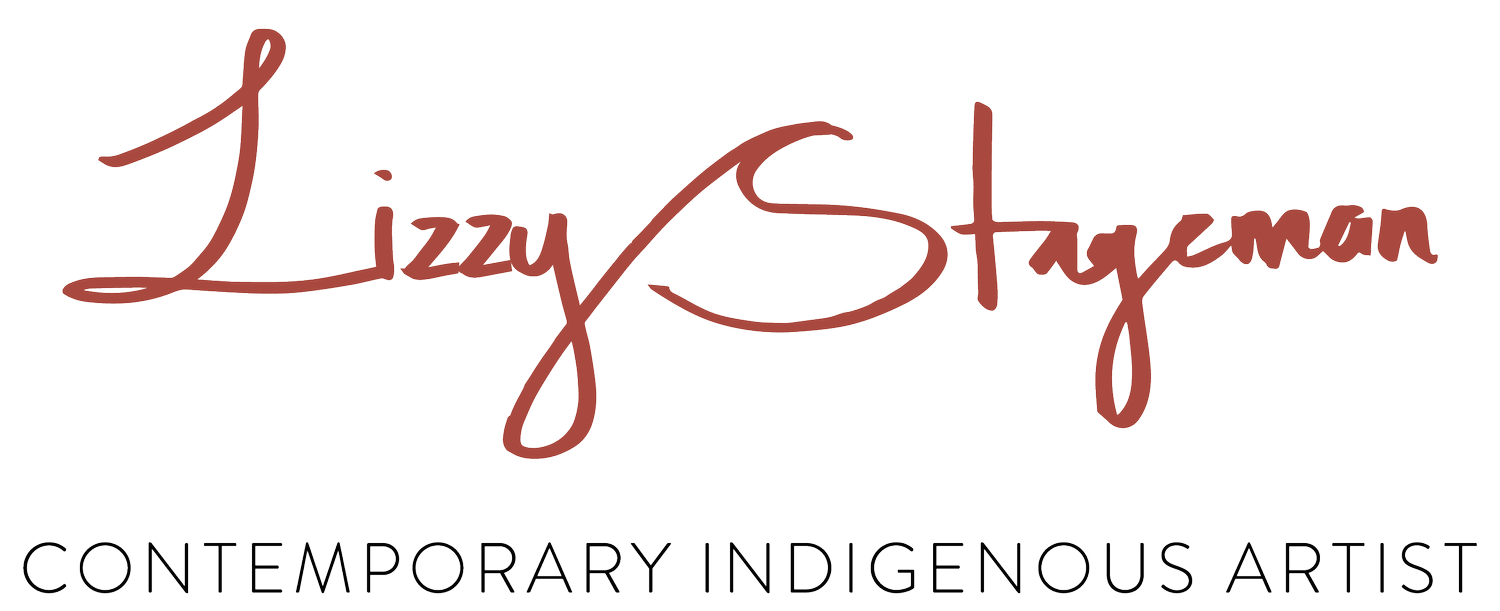ArchiPro: A harmonious marriage between ancient Indigenous techniques and contemporary style
Words by ArchiPro Editorial Team
Despite being a relative newcomer to the art scene, First Nations artist Lizzy Stageman has quickly garnered public acclaim for her evocative work that seamlessly blends traditional and contemporary styles.
“My inspiration comes from within,” artist and proud Wiradjuri, Ngiyampaa, and Barkindji nations descendant Lizzy Stageman tells ArchiPro. “It’s my life on a canvas.”
Lizzy views traditional techniques through a modern lens, reframing time-honoured Aboriginal symbols and dots to suit the contemporary world without losing sight of their meaning and significance. “[I use] dots to describe the footsteps taken throughout my journey, every dot being a step in my life,” explains Lizzy. “As the patterns unfold, so does my life and my journey.”
The daughter of a Wiradjuri, Ngiyampaa, and Barkindji nations mother and British father, Lizzy’s art sits at the intersection of both cultures, fusing aesthetic elements together to share stories through the acrylic and oil mediums.
Lizzy’s path to art was not a linear one. Although she showed an aptitude for the subject in her youth and was awarded a university scholarship in Fine Art, family obligations compelled Lizzy to cast aside her artistic aspirations in favour of working in government roles and raising a family.
More than three decades later, Lizzy experienced an unfortunate series of health issues, surviving a stroke in 2017 before being diagnosed with breast cancer the following year. A gift of art supplies from her family prompted Lizzy to pick up the paintbrush and return to art. “I felt for the very first time that I belonged,” says Lizzy. “From creating my first indigenous piece up to now I feel a sense of pride in all my achievements.”
Although she’d put her artistic side on hold for some years, Lizzy doesn’t begrudge the time lost. “I feel it wasn’t my time all those years back and I was meant to go on this journey that led me to find myself and to learn more about this beautiful culture that I have been blessed to be born into,” she says. “Even though going through the tough times wasn’t easy, they made me stronger and more determined to follow my dreams.”
While Lizzy’s Aboriginal identity informs her art, her inspiration is derived from both her own personal experiences and those of her clients, as well as the world around her. “I tend to look at things in a different light, seeing colour and shapes in almost anything,” says Lizzy, citing her culture, life, fashion, and surroundings as other sources of inspiration. She adds that her three “children all play a part in many of my paintings as they are my proudest achievement and the reason I am here today.”
A feature on the home renovation television show The Block catapulted Lizzy’s career to new heights almost overnight. “To have my work speak to people the way it does is truly amazing,” says Lizzy, whose artwork spoke to contestant Georgia both emotionally and aesthetically. “It has been a life-changing experience. To be rewarded for something I love to do is a feeling like no other.”
Forging a unique artistic style for herself, each of Lizzy’s pieces represents the union of ancient Indigenous and contemporary styles, with artworks looking just as at home in modern residences as they do in art galleries. While colour is a key element in several of Lizzy’s striking pieces (the Sweet Rain series, in particular), her journey began in a monochromatic fashion.
Lizzy’s first work, Finding My Place, depicts her transformative healing journey through art. “My use of black and white in a lot of my works is to celebrate my two cultures coming together and to be able to tell my story without the distraction of colour,” explains Lizzy.
Like many of her concepts, the idea for the aforementioned Sweet Rain series came to Lizzy in the early hours of the morning. “At the time of creating that series, our town and a lot of other people were going through the worst drought in a hundred years,” Lizzy says. Designed to celebrate the essential role rain plays in our livelihoods, Sweet Rain puts a contemporary spin on the Aboriginal symbol for rain, encasing the bottom of each raindrop in delicate white dots to form a cascading effect.
A continuation of the series, Purple Rain is a masterful exploration of colour, with each hue holding a personal meaning for Lizzy. “When red and blue are mixed they make purple, and just like that red and blue took a new path,” she explains. “As the colours blend, I celebrate all the things I am grateful for and see in this world. The raindrops are celebrated by the gold dots to emphasise the importance of rain and that to many it is liquid gold.”
Lizzy says the Sweet Rain series is also about accepting change. “It’s about evolving and not letting things in the past prevent you from having a future.”
Learn more about Lizzy's story and explore her artwork here.
